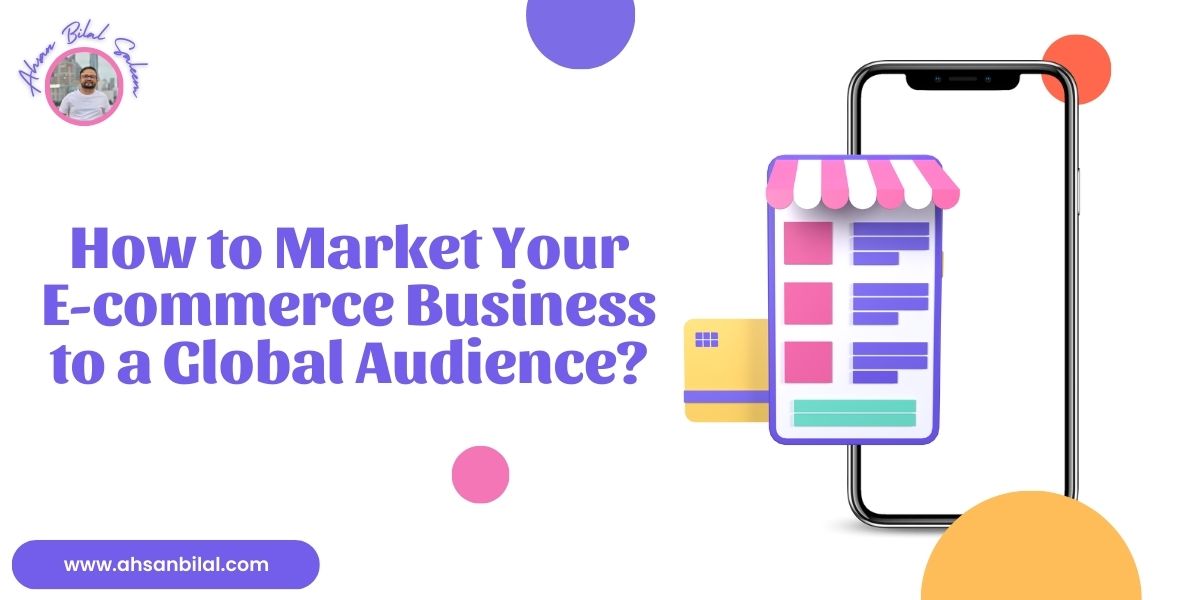How to Market Your E-commerce Business to a Global Audience?
Expanding your e-commerce business to reach a global audience can significantly increase your market potential. However, successfully entering international markets requires careful planning, strategic execution, and cultural sensitivity. In this article, we’ll explore actionable steps to help your e-commerce business thrive in the global arena.
Conduct Comprehensive Market Research
Before entering a new market, understanding its dynamics is crucial. Market research should include:
- Cultural Preferences: Identify product demand and adapt to cultural expectations.
- Competitor Analysis: Study successful local and global competitors.
- Economic Factors: Assess purchasing power and spending habits of the target audience.
Tools like Google Trends, Statista, and local government trade reports can provide valuable insights.
Optimize Your Website for a Global Audience
Your site is the foundation of your internet business. Optimize it for a seamless global experience by focusing on:
- Language and Localization: Offer multilingual support and translate content to resonate with local audiences.
- Currency Conversion: Allow users to view prices in their local currencies.
- Mobile Responsiveness: Ensure your site is mobile-friendly, as mobile shopping is prevalent worldwide.
Integrating localization tools like Weglot or WPML for language support can simplify this process.
Leverage International SEO Strategies
Search engine optimization (SEO) is vital for driving organic traffic from global markets. Tailor your Search engine optimization systems to explicit areas:
- Hreflang Tags: Implement these tags to inform search engines about language and regional targeting.
- Local Keywords: Use region-specific keywords to enhance visibility in search engine results.
- Country-Specific Domains: Consider using country-code top-level domains (ccTLDs) like .uk or .in for better local ranking.
Use Social Media to Connect with International Audiences
Social media platforms vary in popularity across countries. Research the most used platforms in your target markets and develop tailored strategies for each.
- Localized Content: Share culturally relevant posts and engage with local trends.
- Targeted Advertising: Utilize advanced targeting options on platforms like Facebook, Instagram, and TikTok to reach specific demographics.
- Collaborate with Local Influencers: Partner with influencers who have a strong presence in your target market to build credibility and trust.
Offer Multiple Payment and Shipping Options
Global customers value flexibility in payment and shipping methods.
- Payment Methods: Include international payment gateways such as PayPal, Stripe, and local options like AliPay for China or Paytm for India.
- Shipping Options: Collaborate with global logistics providers and offer multiple delivery methods, including express shipping and local pickup points.
Transparent pricing and delivery times can significantly enhance the user experience.
Adapt Your Marketing Campaigns to Local Cultures
One-size-fits-all campaigns rarely succeed in global markets. Instead, create region-specific campaigns that respect cultural nuances.
- Cultural Sensitivity: Avoid using imagery or language that may be offensive or misinterpreted.
- Localized Promotions: Align with local holidays, festivals, or events to drive engagement.
- Tailored Messaging: Highlight benefits and features that resonate with the values of your target audience.
Prioritize Customer Support for Global Audiences
Global expansion demands robust customer support to cater to diverse time zones and languages.
- Multilingual Support: Provide customer service in the native language of your customers.
- Chatbots and AI: Use tools like Intercom or Zendesk for 24/7 support.
- Localized FAQs: Offer region-specific FAQs to address common concerns.
Build Trust with Global Customers
Trust is a cornerstone of success in international markets. Build credibility by:
- Displaying Trust Badges: Use secure payment logos, SSL certificates, and customer reviews prominently.
- User Reviews and Testimonials: Showcase testimonials from customers in the target region.
- Easy Returns Policy: Provide clear and hassle-free return options to reduce purchase hesitations.
Invest in Global Advertising Campaigns
Paid advertising can help you gain visibility quickly in new markets. Platforms like Google Ads, Facebook Ads, and local advertising networks can be highly effective.
- Geo-Targeting: Use geo-targeting to reach specific regions with relevant ads.
- Localized Ad Creatives: Design ads that reflect local culture and language.
- Retargeting Campaigns: Keep your brand top-of-mind for international visitors who haven’t converted.
Measure and Optimize Your Efforts
Success in global markets requires constant monitoring and refinement. Use analytics tools like Google Analytics, Shopify Analytics, or region-specific tools to track performance.
- Key Metrics: Monitor metrics such as traffic sources, conversion rates, and bounce rates by region.
- A/B Testing: Test different campaigns, landing pages, and calls-to-action for better results.
- Customer Feedback: Gather feedback from international customers to identify areas for improvement.
Conclusion
Marketing your e-commerce business to a global audience is an exciting opportunity to grow your brand and revenue. By understanding the nuances of different markets, optimizing your website, leveraging international SEO, and adopting culturally sensitive marketing strategies, you can establish a strong presence worldwide. Remember, success in global e-commerce is a journey that requires adaptability, continuous learning, and a customer-first approach.










